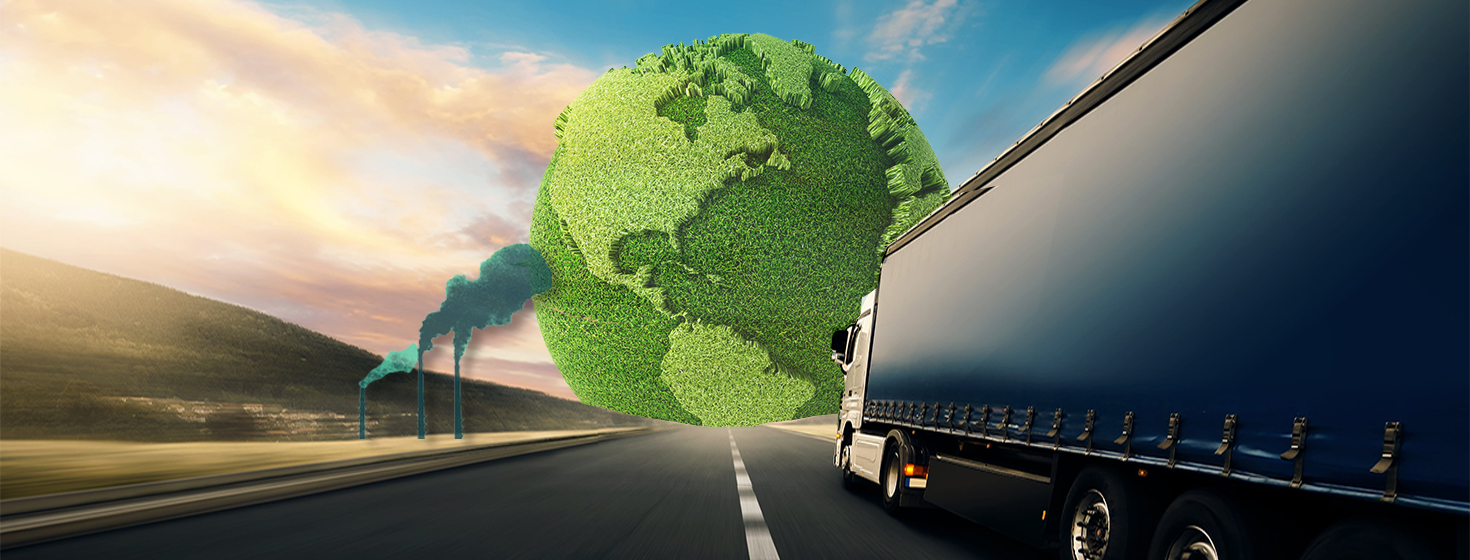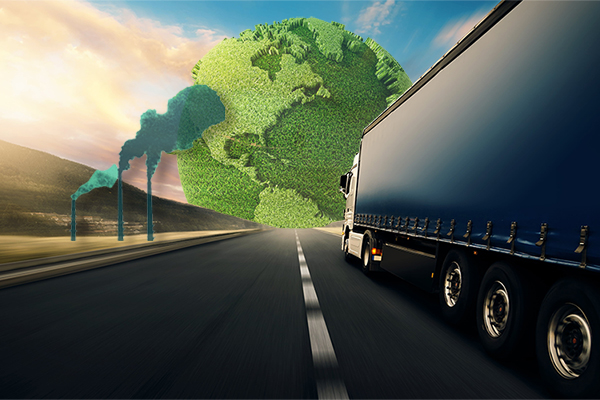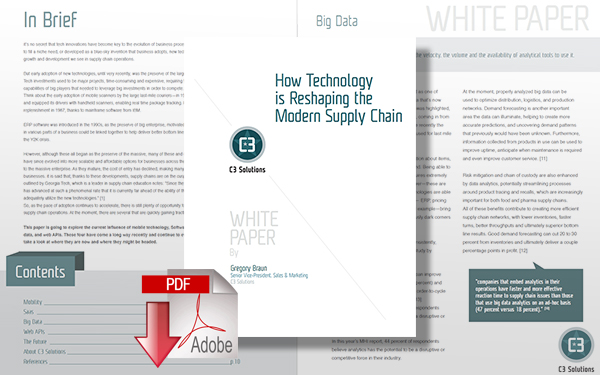How Trucking & Logistics Technology Plays a Role in Investing In Your Planet

With the UN climate summit imposing tighter regulations on GHG emissions, the clean energy tech market is booming, offering various promising solutions for companies striving to reach the vaunted “Net Zero” throughout their supply chain.
Supply Chain Sustainability
Within supply chains, sustainability is a topic that has gained mainstream relevance in recent years, thanks to a legislative push towards reducing carbon emissions and consumer consciousness that is increasingly expecting businesses to do better.
The focus on sustainability is not without reason - the logistics industry, in its entirety, contributes significantly to the global carbon footprint, with the transportation segment alone making up roughly 27% of CO2 emissions.
With the UN climate summit imposing tighter regulations on GHG emissions, the clean energy tech market is booming, offering various promising solutions for companies striving to reach the vaunted “Net Zero” throughout their supply chain. However, these new solutions raise two critical questions - is it financially viable, and will it pay dividends in quick time?
While companies would love to transition instantly, the financial burden of adopting change cannot come at the cost of running a profitable business. For global supply chains at large, creating a perfect, carbon net-zero environment would require remodeling nearly the entire global economy.
A study by McKinsey estimated that a global transformation to net-zero carbon supply chains would require $9.2 trillion in annual average spending on physical assets every year leading to 2050 - exceeding current spending by $3.5 trillion and an increase equivalent to half of the global corporate profits in 2020.
Clearly, this is an uphill task that supply chains would have to set their sights on and achieve, considering the alternative is something to avoid at all costs. But assuming that every company participating in the global economy is willing to play along, can these lofty targets be achieved in time?
Time and time again, history has shown us that all major technological breakthroughs need decades to make it through to the mass market. This also does not account for the typical pushback within the energy industry itself, putting clean energy technology further out of reach for many sectors.
While great in theory, the broad, sweeping changes discussed above aren’t what is immediately necessary. By focusing on what can be changed instantly, organizations would ultimately produce a more meaningful - and more immediate - impact, especially within the transportation industry.
Inefficiency in Planning & Execution
One of the biggest challenges facing the transportation market is inefficiency in planning and execution, with the trucking industry being one of the worst offenders. While promising innovations centered on trucking and transport have mushroomed in recent years, they have been mired by the excessive fragmentation we see in the industry, delaying the technology uptake.
Considering that the global logistics market is currently valued at $4.92 trillion as of 2021, it is staggering to think that some companies are still using paper logs and fax machines as primary record keeping.
Download The Paperless Pandemic: How Ditching Documents Keeps People Safe and Makes You More Efficient
Fortunately, a constant media push for relevant technology has led businesses to sit up and take notice. For example, load matching services offered through a transportation management system (TMS) could significantly cut deadhead miles (non-payload bearing miles). Approximately 15 to 35% of the annual mileage of a commercial vehicle are deadhead miles.
This needlessly contributes to CO2 emissions, but it also racks up transportation costs as fuel is consumed and drivers are paid. Additionally, deadhead miles are more dangerous for both the driver and non-commercial traffic on the road as drivers tend to drive rasher when they do not have freight on board, considering deadheading is most likely not the favorite part of their job.
Yard management is another significant opportunity to improve sustainability and one that is most commonly overlooked within the industry.
An idling truck can burn up to a gallon of fuel per hour, with an average wait time of two hours in a warehouse yard. As is often the case, especially with the current state of the supply chain, that wait time can be upwards of five hours or more. Deadlines are overshot, detention fees rack up, drivers lose out on wages, and trucks are tied up, shortening the available capacity and driving up the spot market. Even setting aside sustainability, the cost associated with the inefficiency should be reason enough for most companies to start scrambling for a yard management system.
Yes, clean energy technology will go a long way toward improving and ultimately reducing the extent of carbon emissions in the global supply chain. Electric vehicles are growing in popularity and will become more cost-effective as the technology matures. Until that time arrives, however, there needs to be a better focus on what can be done with the currently available technology.
We consistently labor under the misconception that we need a single silver bullet solution to fix the problem. Instead, we should focus on a holistic approach that looks at every process's angle, facet, and step. Breaking down into smaller, more manageable pieces enables companies to invest in the planet regardless of size or profit margins.
Sustainability is a global issue. It impacts every living person on the planet and will continue to until we all begin taking small steps towards a solution.
Have you Read our Free Exclusive White Paper? The Paperless Pandemic: How Ditching Documents Keeps People Safe and Makes You More Efficient
Related Resources
How Technology is Reshaping the Modern Supply Chain
This paper explores the influence of rapidly evolving technologies that have recently come a long way and will continue to transform the supply chain in the years to come. Download Now!
The Paperless Pandemic: How Ditching Documents Keeps People Safe and Makes You More Efficient
This paper details why health and safety is not the only reason to go paperless - we look at a few others, including cost savings, accuracy, and, of course, the environment. Download Now!
More Resources from C3 Solutions
Related Article: How Smart Dock & Yard Management Creates Sustainable Company Practices
Article Topics
C3 Solutions News & Resources
Efficient Automation Can Significantly Increase Warehouse Productivity C3 Solutions Major Trends for Yard and Dock Management in 2024 Replace Your Antiquated Spreadsheets with C3 Solutions’ Cloud Based Software Adapting to New Realities Shaping the Next-Gen Grocery Shopping Experience The Shipper’s Handbook to Managing Expectations This Holiday Season Dock Scheduling Allows Food Distributor to Avoid Detention Charges The Dynamic Grocery Market More C3 SolutionsLatest in Supply Chain
Microsoft Unveils New AI Innovations For Warehouses Let’s Spend Five Minutes Talking About ... Malaysia Baltimore Bridge Collapse: Impact on Freight Navigating TIm Cook Says Apple Plans to Increase Investments in Vietnam Amazon Logistics’ Growth Shakes Up Shipping Industry in 2023 Spotlight Startup: Cart.com is Reimagining Logistics Walmart and Swisslog Expand Partnership with New Texas Facility More Supply Chain

















